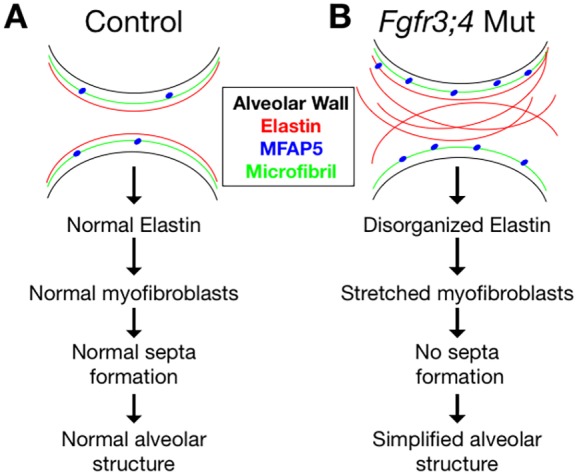Fig. 8.

Model of the role of FGFR3 and FGFR4 in alveologenesis. (A) In the control lung, MFAP5 molecules (blue dots) are regularly spaced and act as seeds to facilitate crosslinking of elastin molecules onto the microfibrils in an orderly manner, forming long elastin fibers that line the alveolar entrance ring. This deposition of elastin supports normal morphology and function of myofibroblasts, which drives septa formation, leading to expansion of the gas-exchange surface area. (B) In the Fgfr3;4 mutant lung, the increase in MFAP5 leads to an increase in crosslinking sites of elastin onto the microfibrils, leading to more and shorter elastin fibers running through the walls of the primary alveoli. The disorganized elastin network leads to stretched myofibroblasts and disrupts septa formation, resulting in alveolar simplification.
